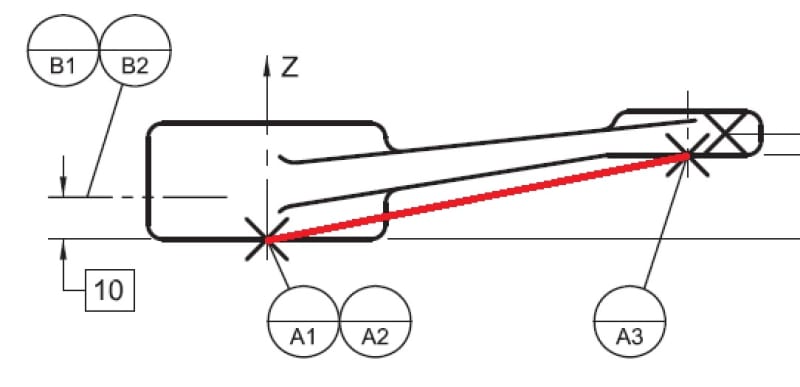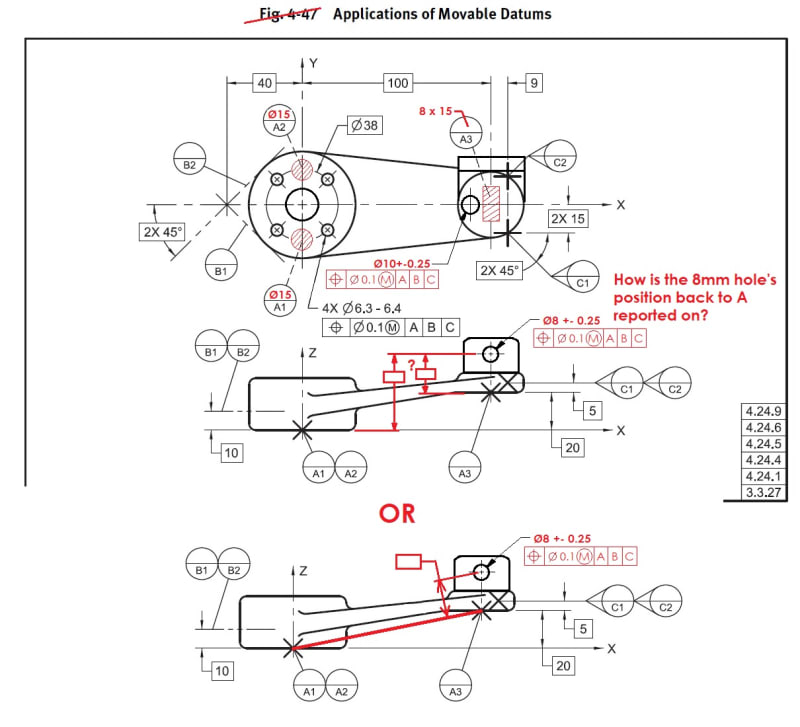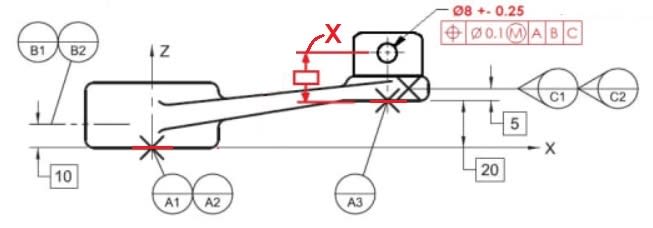Jay8833
Automotive
- Apr 19, 2023
- 7
Loving this forum and the great info you all share!
I have a question regarding Datum Targets.
In the 2009 standard, Fig 4-47 shows datum target points A1-A3 on different planes. How exactly are the four holes related to the Datum A target points? They wouldn't be perpendicular if A1-A3 are creating a plane. I feel like I'm missing something here and would appreciate some guidance.
Thanks!
I have a question regarding Datum Targets.
In the 2009 standard, Fig 4-47 shows datum target points A1-A3 on different planes. How exactly are the four holes related to the Datum A target points? They wouldn't be perpendicular if A1-A3 are creating a plane. I feel like I'm missing something here and would appreciate some guidance.
Thanks!



